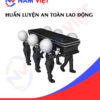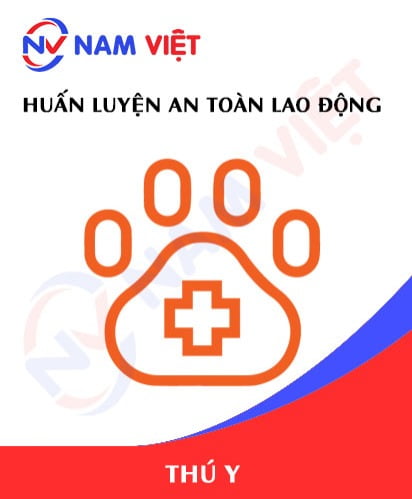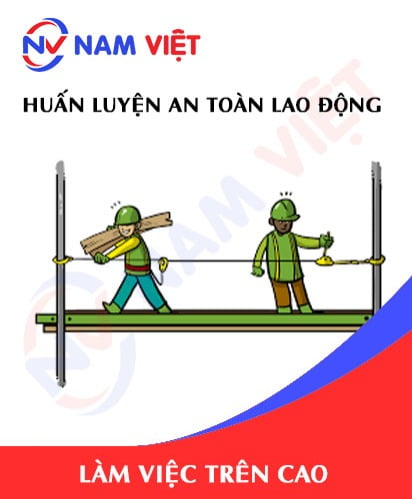Occupational safety training in the banking industry
99,000 ₫
Note: The above price is calculated per person, prices may fluctuate depending on the number of participants in the course and market movements. For more accurate price support, please refer to the price list or contact our consulting staff directly.
The Banking Industry Safety Training course is a course that provides knowledge of Group 3 occupational safety. The course will raise awareness of how to prevent workplace accidents for participants. Accordingly, the occupational safety training content is closely aligned with Article 18 of Decree 44/2016/ND-CP.
Table of Contents
Toggle1. Overview of the banking industry
a. What is the banking industry?
The banking industry is an important economic and service sector in a nation’s financial system. This sector includes organizations and activities related to the collection, management, and use of currency and financial assets, as well as the provision of financial services to individuals, businesses, and organizations.
The main banking institutions in the banking industry include commercial banks, investment banks, central banks, and other financial organizations such as insurance companies, securities brokerage firms, and investment funds.
Activities in the banking industry include a wide range of financial services such as accepting deposits, providing loans, transferring money, offering credit cards, asset management, financial consulting, and payment services. The banking industry also plays a vital role in financial risk management and supports the nation’s economic activities by providing capital and funding for businesses and individuals.
The banking industry plays an important role in economic, financial, and social development. It facilitates lending and investment, provides safe and reliable financial services, and contributes to financialization and sustainable development.

b. Types of machines in the banking industry
In the banking industry, some types of machines and equipment are used to support and enhance operations. Below are some common types of machines in banks:
- Automated Teller Machine (ATM): A device that allows users to withdraw cash, check account balances, and perform other financial transactions without visiting a bank counter.
- Computer: Computers and peripheral devices such as keyboards, mice, and monitors are used to perform computational tasks and manage information in banks, including transaction processing, account management, and interest calculation.
- Barcode scanner: Barcode scanners are used to read information from documents such as passports, ID cards, credit cards, and savings books. This helps make verification and data entry faster and more accurate.
- Printer: Printers are used to print invoices, transaction statements, receipts, and other documents related to banking transactions and activities.
- Scanner: Scanners are used to scan and store images of important documents such as personal papers, contracts, and transaction vouchers. This helps create electronic copies and enhances convenience and safety in document storage.
- Time attendance machine: In some banks, time attendance machines are used to record employees’ working hours, helping automate and improve efficiency in attendance management and payroll.
- Money counter: Money counters are used to count and verify the authenticity of cash. This helps reduce time and effort in counting money and ensures accuracy in the process.

c. Typical banks in Vietnam
Below are some typical banks in Vietnam:
- State Bank of Vietnam (Vietcombank): The largest commercial bank in Vietnam with extensive operations domestically and internationally. Vietcombank provides diverse banking services such as loans, savings, payments, investments, and trade finance.
- Agricultural and Rural Development Bank (Agribank): A bank specializing in agriculture and rural development. Agribank offers financial products and services such as agricultural loans, rural development funding, savings, and payment services.
- Vietnam Joint Stock Commercial Bank for Industry and Trade (VietinBank): One of the leading commercial banks in Vietnam. VietinBank provides diverse banking services such as credit, savings, payments, investments, and trade finance.
- Tien Phong Commercial Joint Stock Bank (TPBank): A rapidly growing multinational commercial bank in recent years. TPBank offers financial services such as loans, savings, payments, credit cards, and online banking.
- Vietnam Export Import Commercial Joint Stock Bank (Eximbank): One of the leading banks in import-export services in Vietnam. Eximbank provides financial products and services such as export-import loans, international payments, and trade finance.
- Bank for Investment and Development of Vietnam (BIDV): One of the largest commercial banks with a wide network in Vietnam. BIDV provides diverse financial services such as loans, savings, payments, investments, and trade finance.

d. Specific jobs in the banking industry
The banking industry offers various jobs, from financial management to customer service. Below are some specific jobs in the banking industry:
- Bank teller: This is a basic role in the banking industry, where tellers usually work at counters or customer service desks. Their tasks include handling customer transactions, deposits/withdrawals, issuing credit/debit cards, answering queries, and providing information on banking products and services.
- Credit officer: Credit officers assess and determine the creditworthiness of customers applying for loans. They collect financial information, check credit history, analyze risks, and make decisions on lending and loan conditions.
- Risk manager: Risk managers assess and manage financial risks in banks. They analyze loan projects, manage credit portfolios, propose risk prevention measures, and ensure compliance with the bank’s risk-related regulations and guidelines.
- Financial specialist: Financial specialists work in a bank’s finance department, carrying out tasks such as capital management, financial planning, financial analysis, and investment project evaluation.
- Marketing and sales officer: These specialists promote and introduce banking products and services to customers. They advise and support customers in choosing financial products suited to their needs.
- Customer relationship manager: These managers work directly with individual or business clients to meet their financial needs. Their job includes consulting, account management, answering questions, and providing appropriate financial services.
- Branch/Bank manager: Branch or bank managers are responsible for managing the entire operations of a branch or bank. They supervise transactions, manage employees, ensure compliance with banking regulations and standards, and achieve business goals.
2. Overview of occupational safety training in the banking industry
a. What is occupational safety training in the banking industry?
- Occupational safety training in the banking industry consists of sessions that raise awareness on preventing workplace accidents for employees. Accordingly, those working directly in the banking sector belong to group 3.
- The occupational safety training course helps employees identify and avoid risks, reducing the likelihood of workplace accidents while working.
REGISTER FOR OCCUPATIONAL SAFETY TRAINING SERVICE
b. Training duration
Initial occupational safety training duration
- Total training duration is at least 24 hours, including test time.
- 8 hours of theoretical study on the system of policies and laws on occupational safety and hygiene.
- 8 hours of theoretical study on basic knowledge of occupational safety and hygiene.
- 4 hours of theoretical study on specialized training content.
- 2 hours of practical training on specialized content.
- 2 hours of final theory test after the training course.
The safety training center will divide the time into multiple sessions depending on the scheduling for employees. Typically, there are 6 sessions, with the course lasting 3 days, provided that the enterprise can arrange continuous learning time.
Periodic occupational safety training duration
- Before the occupational safety card expires, employees must attend a periodic occupational safety training course if they want to renew it, with the training duration being at least 50% of the initial training duration.
Explanation: The total periodic occupational safety training duration is at least 12 hours, including test time. After completing the periodic training and passing the test, employees will be reissued or extended their occupational safety card.
c. Training course content
| No. | TRAINING CONTENT | TRAINING TIME (HOURS) | |||
| Total | Including | ||||
| Theory | Practice | Test | |||
| I | System of policies and laws on occupational safety and hygiene | 8 | 8 | 0 | 0 |
| 1 | Overview of the system of legal documents on occupational safety and hygiene. | 6 | 6 | ||
| 2 | System of occupational safety and hygiene standards and technical regulations. | 1 | 1 | ||
| 3 | Specific regulations of state management agencies on occupational safety and hygiene when constructing new facilities, expanding, or renovating facilities to produce, use, store, and inspect machinery, equipment, materials, and substances requiring strict occupational safety and hygiene standards. | 1 | 1 | ||
| II | Basic knowledge of occupational safety and hygiene | 8 | 8 | 0 | 0 |
| 1 | Basic knowledge of hazardous and harmful factors at the workplace. | 4 | 4 | ||
| 2 | Methods for improving working conditions. | 1 | 1 | ||
| 3 | Safety culture in production and business. | 1 | 1 | ||
| 4 | Rights and obligations of employers and employees; occupational safety and hygiene policies and regimes for employees; functions and duties of the occupational safety and hygiene network. | 1 | 1 | ||
| 5 | Occupational safety and hygiene rules, warning signs, safety signs, and use of safety devices, personal protective equipment; skills in first aid, prevention of occupational diseases. | 1 | 1 | ||
| III | Specialized training content | 6 | 4 | 2 | 0 |
| General knowledge of machines, equipment, substances generating hazardous and harmful factors; analysis, assessment, and risk management in occupational safety and hygiene, safe working procedures with machines, equipment, and substances requiring strict safety and hygiene standards. | 6 | 4 | 2 | ||
| IV | Final occupational safety training test | 2 | 2 | 0 | 0 |
| Total | 24 | 22 | 2 | ||
See more training content for 6 groups
d. Occupational safety card
After completing occupational safety training and passing the test, employees will be issued an occupational safety card (also commonly called a occupational safety certificate for group 3).
The group 3 safety card clearly states information such as full name, date of birth, job, and specific working environment. It also includes training duration, a red seal, and a signature confirming completion of the course.
According to the regulations on card issuance stated in clause 2 of Article 24, Decree 44/2016/ND-CP, it is divided into 2 cases:
- In case the employer and employee have a labor contract, the employer must sign, stamp, and seal the safety card for the trained group 3 employee after completing training from a safety training unit and passing the test.
- In case of freelancers, seasonal workers, or those without a labor contract, the training unit must sign, stamp, and seal the safety card for the worker after completing training from the occupational safety training unit and passing the test.

3. Identifying hazards in the banking industry
In the banking industry, there are several potential hazards that may affect the health and safety of workers. Below are some common hazards to be aware of:
- Stress and work pressure: The banking industry often demands high-pressure work requiring focus and accuracy. Prolonged and poorly managed workload pressure can lead to stress and affect both the mental and physical health of workers.
- Risk of occupational illnesses: Workers in the banking industry may face risks of developing occupational illnesses such as work-related stress disorders, back pain, cardiovascular diseases, strokes, and erectile dysfunction due to prolonged work pressure and long working hours.
- Physical safety risks: In some cases, banks can become targets of criminals attempting robbery or attacks. Bank employees need to recognize security measures and warning behaviors to ensure physical safety for themselves and their colleagues.
- Work time disorders: The banking industry often involves long working hours, including evenings, weekends, and holidays. This can affect workers’ health, personal life, and social interactions.
- Health risks from the work environment: The banking industry may involve working in environments with strong lighting, noise, limited space, and poor air quality. This can cause fatigue, stress, and affect workers’ health.
- Information security risks: Banks handle sensitive information and customers’ personal data. Lapses in information protection and unauthorized system access can endanger both employees and customers.
4. Safety measures for the banking industry
Safety measures for employees working in the banking industry may include:
- Ensuring physical safety: Provide a safe working environment with protective measures such as alarm systems, surveillance cameras, access control, emergency exit lights, and fire prevention and firefighting measures. Ensure that work areas and customer contact areas are spacious, well-ventilated, and safe.
- Training and guidance: Provide occupational safety training for all employees, including rules on the use of safety equipment, risk management, emergency handling, and incident reporting. Guide employees on safe working procedures and advise them on performing tasks safely.
- Mental health protection: Bank employees often face workload pressure and stress. Provide psychological support and mental health programs such as counseling, stress management discussions, work-life balance sessions, and create a supportive and respectful work environment.
- Security risk management: Implement information security measures such as data encryption, access management, strong password policies, and restricted access to sensitive information. Train employees in fraud prevention, customer authentication, and handling security-related incidents.
- Using safety equipment: Ensure that employees are provided with and use safety equipment such as personal computers protected by antivirus software, firewalls, and regular security updates. Also, provide personal protective equipment such as masks, ear protection, gloves, and safety glasses (if necessary).
- Incident inspection and reporting: Establish procedures for checking, controlling, and reporting safety incidents immediately when they occur. Ensure workers know how to report safety issues and encourage their participation in improving occupational safety.
- Regularly organize work environment monitoring in factories and enterprises to collect and analyze harmful factors affecting workers, thereby adjusting and reducing risks to prevent occupational diseases.

5. Types of accidents in the banking industry
In the banking industry, although it is not a highly dangerous work environment, some types of accidents can still occur. Below are some common types of accidents in the banking industry:
- Slips and falls: This may occur when employees are in a hurry or fail to notice objects on the floor or workspace. Slips and falls can cause injuries, especially if employees lack personal protective measures such as anti-slip shoes.
- Injuries from falling objects: If objects, documents, or equipment are not properly placed or are stacked too high, they may fall and injure banking staff. This is a primary risk for employees working in transaction or reception areas.
- Accidents with technological equipment: While using computers, printers, scanners, and other devices, accidents such as collisions, hand or finger entrapment in mechanisms may occur. These can cause injuries or damage equipment.
- Accidents during movement: When employees move around in the bank, accidents such as collisions with obstacles, slips, or being struck by internal transport equipment such as carts, lifts, or elevators may occur.
- Work-related health issues: The banking industry may face health issues such as stress, fatigue, work-related autism, and vision problems due to prolonged computer screen exposure.
6. Benefits of occupational safety training in the banking industry
Nam Viet Safety provides your business with outstanding benefits after completing occupational safety training courses in accordance with Decree 44/2016/ND-CP on occupational safety and hygiene for companies, factories, and enterprises.
- Workers can identify potential hazards of occupational accidents and take preventive measures to avoid them.
- Your business can establish preventive measures in production, operation, and maintenance processes.
- Minimize costs when safety risks occur in the workplace.
- Uninterrupted production processes will help increase labor productivity and product quality.
- Ensure compliance with occupational safety laws, avoiding legal risks.
- Create credibility and professionalism in all aspects, thereby enhancing the brand image of your business.
Nam Viet’s training courses are solutions to prevent and protect individuals against external factors so they can avoid dangers that may lead to injuries or, more seriously, death.
REGISTER FOR OCCUPATIONAL SAFETY TRAINING SERVICES
7. Customer feedback after completing the training course
Nam Viet Safety has many years of experience in accompanying numerous businesses in Vietnam in general and particularly in the southern provinces. This responsibility is invaluable to Nam Viet, which is why occupational safety training is increasingly professionalized. The driving force behind Nam Viet’s strong development comes from both positive feedback and constructive suggestions from businesses. Below are the feedbacks of our valued partners whom we have served.
Bac Nam E&C Construction Investment Joint Stock Company
“This was the first time using Nam Viet Safety’s services and I was very impressed by the 24/7 enthusiastic support from the consulting team. The class organization was quick and convenient for our company. Thank you very much, Nam Viet!”
Hoa Dat Construction and Trading Joint Stock Company
“Nam Viet’s services have helped us a lot in simplifying occupational safety and completing safety documentation for our work process. The consulting team was enthusiastic and timely in responding to our inquiries. 5 stars for Nam Viet.”
See more customer interviews after using the service of Nam Viet Safety
8. Occupational safety training competence of Nam Viet Safety
Nam Viet Safety is currently a reputable and high-quality occupational safety training center in Vietnam. Safety training sessions are regularly held at factories, plants, or construction sites across the country (63 provinces and cities).
REGISTER FOR OCCUPATIONAL SAFETY TRAINING SERVICES
License for occupational safety training
- Nam Viet Safety has been inspected and certified by the Department of Occupational Safety under the Ministry of Labor, War Invalids, and Social Affairs with sufficient conditions to conduct occupational safety and hygiene training. This further strengthens our occupational safety training capability.

Materials and lectures
- Before occupational safety training materials are introduced into training courses, they are reviewed and approved to ensure accurate knowledge and effectiveness when applied.
- The teaching methods of instructors are standardized according to Nam Viet Safety teaching standards, developed by experts in occupational safety and hygiene training, ensuring the highest knowledge absorption for trainees.
Facilities
- Controlling classroom factors affecting training enhances teaching performance and knowledge absorption.
- Our training support facilities are always arranged with spacious classrooms meeting standards in area, lighting, and training equipment, etc.
9. Nationwide reputable and quality occupational safety training center
At Nam Viet Safety, we always put our dedication to occupational safety training as the top priority. For us, imparting self-protection knowledge to workers so they can have safety awareness in their work life is part of building the nation.
To ensure effective training, we carefully prepare every detail, no matter how small—from teaching tools, equipment, and facilities to curricula, materials, sound, and lighting.
Our occupational safety instructors are experts with many years of experience. They even have research works on identifying hazards across industries and ways to prevent them.
Their lectures are derived from real-world experience and delivered in an engaging, easy-to-understand way for workers. These factors help workers feel comfortable during the learning process and effectively absorb knowledge. Of course, the training content always aligns with Decree 44/2016/ND-CP.
From there, workers can grasp many preventive measures and self-protection methods, and apply them appropriately in their work reality.
Our training center proudly provides reputable and professional occupational safety training services nationwide with the following advantages:
- Competitive training costs while ensuring training quality.
- Flexible training schedules in accordance with company production needs.
- Quick occupational safety training certification procedures, in compliance with the law.
- Instructors with many years of professional experience.
- Classrooms are controlled for factors affecting training efficiency, enhancing knowledge absorption.
- Lectures tailored to occupational safety practices in enterprises.
- Nam Viet Safety works with dedication and professionalism to provide accurate and fastest customer support.

10. Further references for occupational safety training materials in the banking industry
- Occupational safety training document set
- Occupational safety materials for the banking industry
- Occupational safety training test
1 review for Occupational safety training in the banking industry
No comments yet















caotiensyhung.07081999
Dịch vụ huấn luyện an toàn lao động rất tốt nhé, giảng viên dạy rất sinh động dễ hiểu!